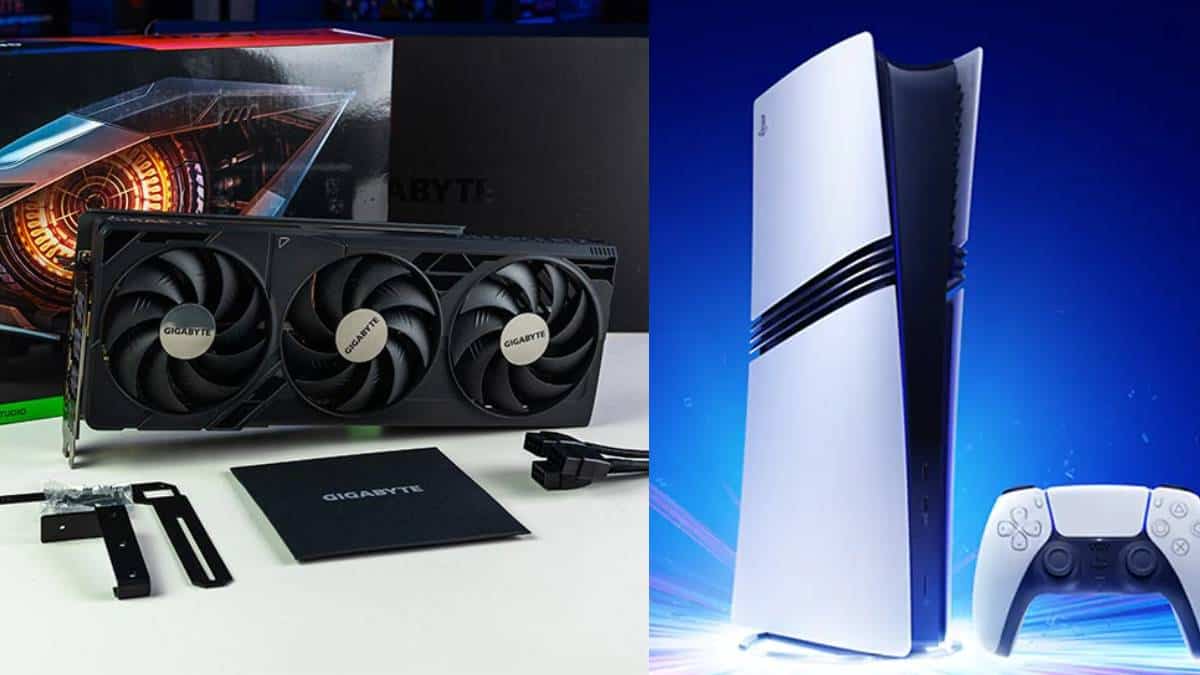PSSR vs DLSS – how do the two upscaling technologies compare so far?

Table of Contents
With the PS5 Pro being officially launched (at long last) comes new technology to bolster its power for fans of the Sony console. Nothing we’re not completely unfamiliar with though, as PSSR is Sony’s answer to DLSS, FSR, and XeSS – the three main names in the world of AI-powered upscaling from Nvidia, AMD, and Intel respectively. For the uninformed, upscaling is a graphics technique that allows you to render games at a lower resolution without a large drop in visual fidelity, boosting performance in the process.
PSSR, which stands for PlayStation Spectral Super Resolution, will act as the console’s upscaling technology and has been rumored for a while now, designed to run its games at higher FPS. While this tech is closely related to frame generation, it seems like PSSR is not dealing with that aspect for the time being; luckily that can be covered by AMD FSR 3 in supported titles, especially since the console does use an AMD APU at its heart.
PSSR vs DLSS first impressions
Now, we’re going to compare PSSR versus DLSS based on what we know so far. Nvidia’s DLSS has been in active development for years now and is available for any RTX graphics card thanks to the presence of Tensor Cores on the hardware side of things. One of the biggest downsides of DLSS though is that it is Nvidia hardware-exclusive, leaving AMD to fill the gaps for many gamers thanks to FSR’s more widespread implementation.
DLSS is generally seen as the most appealing upscaling technology, with DLSS 3 frame generation (exclusive to the most recent RTX 40 series) being a big selling point for Nvidia’s recent graphics cards. It can boost performance by a substantial amount when used correctly. Performance uplift will differ depending on the game, but to take Ghost of Tsushima as an example, Nvidia’s benchmarks point towards a 2.6x improvement “at 4K, with every setting maxed out”.

As for PSSR, we’re yet to fully understand its capabilities and performance gains. The tech is designed to replace any existing temporal anti-aliasing or other upsampling implementation. The PS5 Pro was demonstrated (in the video below) running The Last of Us Part II in greater detail at a targeted 60 FPS, rather than the 30FPS fidelity mode on the usual PS5. However, the Pro version does boast a better GPU overall, so this doesn’t give us clear stats on the difference PSSR in particular makes.
The introduction of the PS5 Pro brings other graphics improvements in the form of ‘Advanced’ Ray Tracing, a larger GPU, ‘2x the frame rate on games’, and fidelity setting-quality graphics for 60FPS, rather than 30FPS. Overall, this leads to a system that is said to be ‘2x the power of the PS5’. Sony itself says that the GPU offers 67% more Compute Units and 28% faster memory, which in turn “enables up to 45% faster rendering for gameplay”.
Which upscaler is better?
There’s still some time to wait until we can get to see in detail what PSSR is capable of as a direct comparison versus DLSS. Either way, it depends on the hardware you’ll be using. For the time being, we will have to assume that PSSR is exclusive to the PS5 Pro, much like how DLSS is exclusive to Nvidia GeForce RTX GPUs.
Right off the bat, Sony boasts a large number of PS5 Pro Enhanced games such as Alan Wake 2, Dragon’s Dogma 2, Hogwarts Legacy, Horizon Forbidden West, Ratchet & Clank: Rift Apart, and more. Pre-orders for the PS5 are set to start on September 26th, with the console’s launch day penciled in for November 7th.
